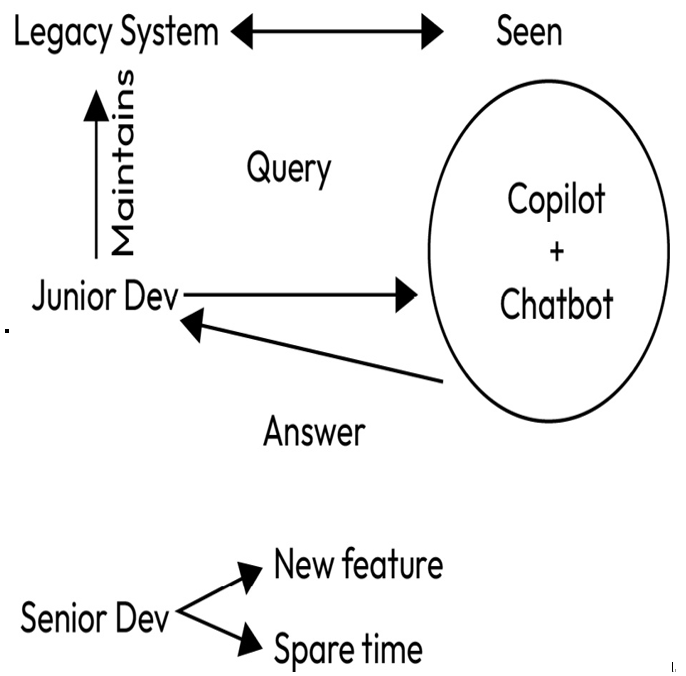Solution – Common DevOps Use Cases in Some of the Biggest Companies in the World
Solution
The solution that was created by Intertech revolved around the use of GitHub Copilot and Azure’s OpenAI integration. Copilot, once trained on the code for a particular repository that was in need of maintenance, could simply write the required scripts if given the correct prompts. Intertech integrated Copilot into the integrated development environments (IDEs) used by their developers so that once they wrote a line or two, Copilot simply inferred what their intentions were and wrote much of the rest. The developers simply had to verify a couple of tests and voilà, an efficient code delivery system, one that frees up time and thinking power. The following figure demonstrates the solution:

Figure 10.4 – New Intertech workflow with generative AI
The solution in the diagram can be broken down into the following steps:
- When a junior developer performs maintenance on a legacy system, they use an instance of Copilot which has been trained on the system’s code base.
- This allows them to query and find the answers about the code base that they are looking for in a human-readable form.
- Copilot also helps autocomplete their code in the style of the rest of the code base, maintaining consistency.
- The senior developer is, for the most part, removed from this process, allowing them to work on newer projects and systems.
Since most of the maintenance operations were being done on the time of the senior developers as they had worked on the older projects, these developers (whose time is more precious because of their depth of experience) were the ones who needed to get hands-on with a lot of the issues to solve them. Even when these issues were handed off to junior developers, they still asked the senior developers for a large amount of advice, which while not negative behavior at all, still hindered the senior developers to an extent.
To make the junior developers less reliant on seniors for advice on the code base, the company integrated Azure OpenAI chatbots into their IDEs. These chatbots could scrape and infer information from the code and the documentation for projects and answer questions about them to the satisfaction of the junior developers most of the time. This reduced the amount of time taken by senior personnel in maintaining the code and it guided the junior developers through the code base using their very own personalized babysitter, if you will. One incredible consequence of this was that the number of emails sent within the company was reduced by 50%, which is a remarkable number. Wouldn’t you like 50% fewer emails for the same if not greater amount of productivity? Not to mention all of the time that is freed up by not being in meetings and having to retread old stuff. This is the kind of value multiplier that can take companies to the next level.
Speaking of value, so far the value that we have seen has been values on fact sheets and computer code, but in our next section, we will see the value that DevOps can generate in a more physically tangible environment using sports as an example.
